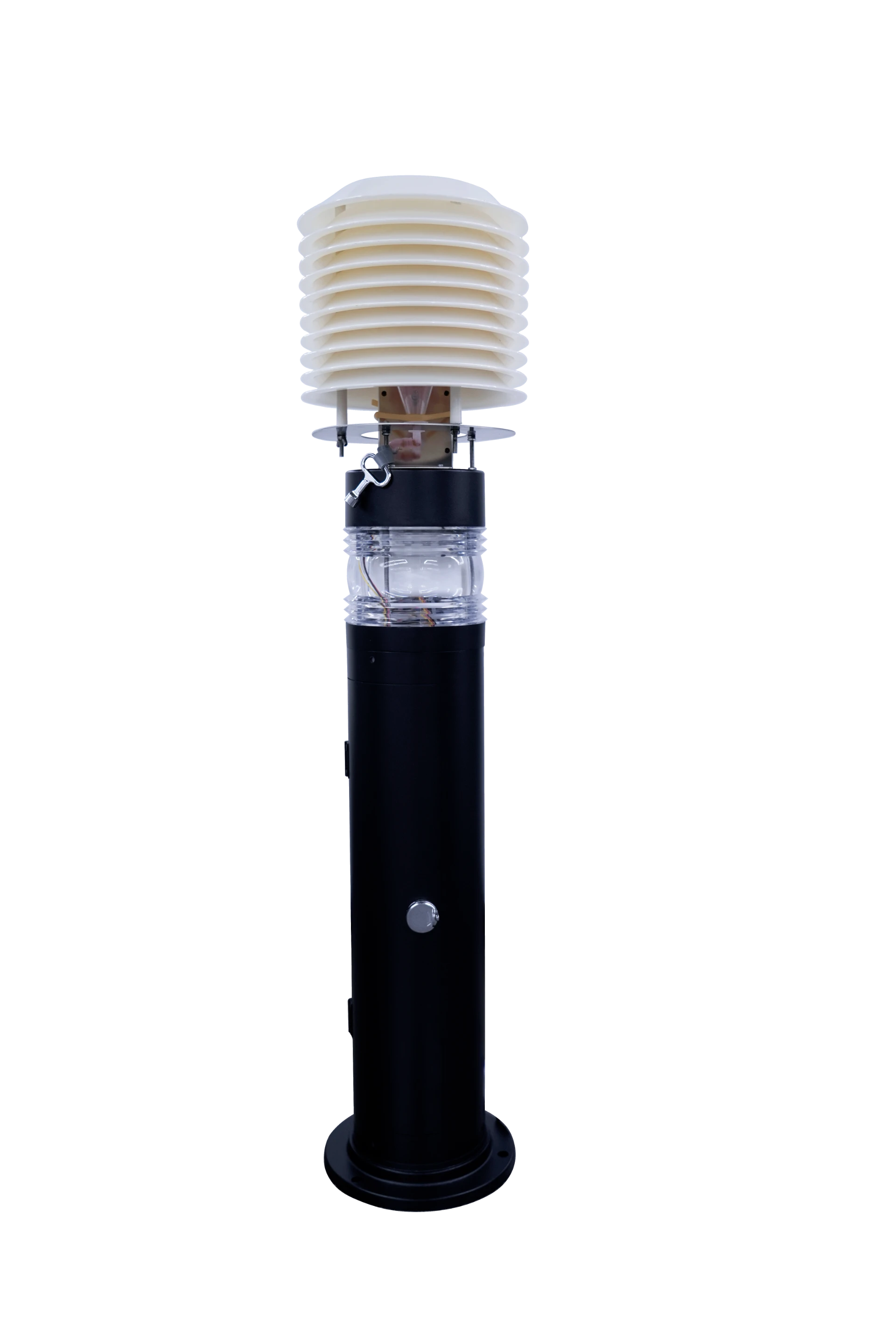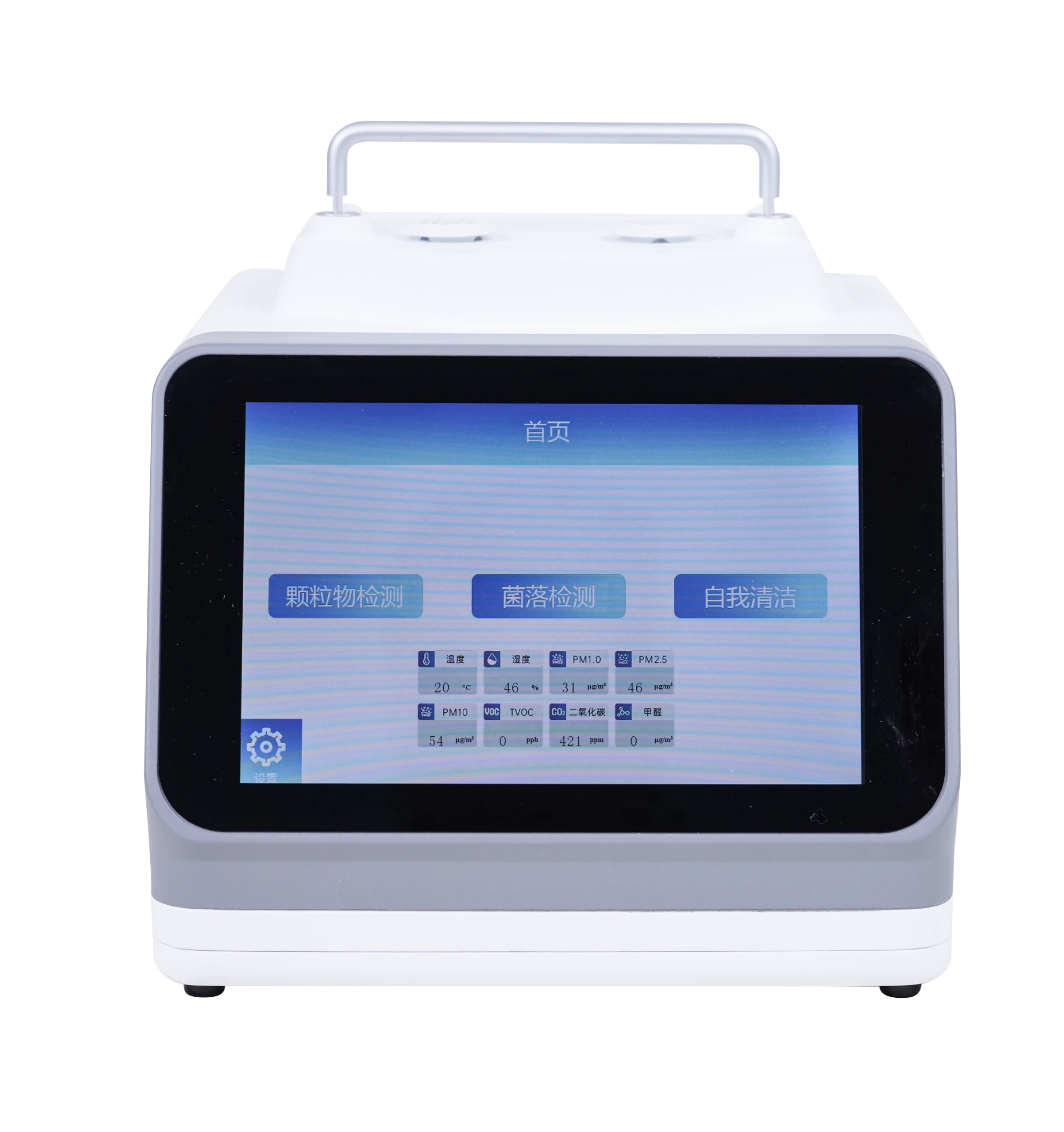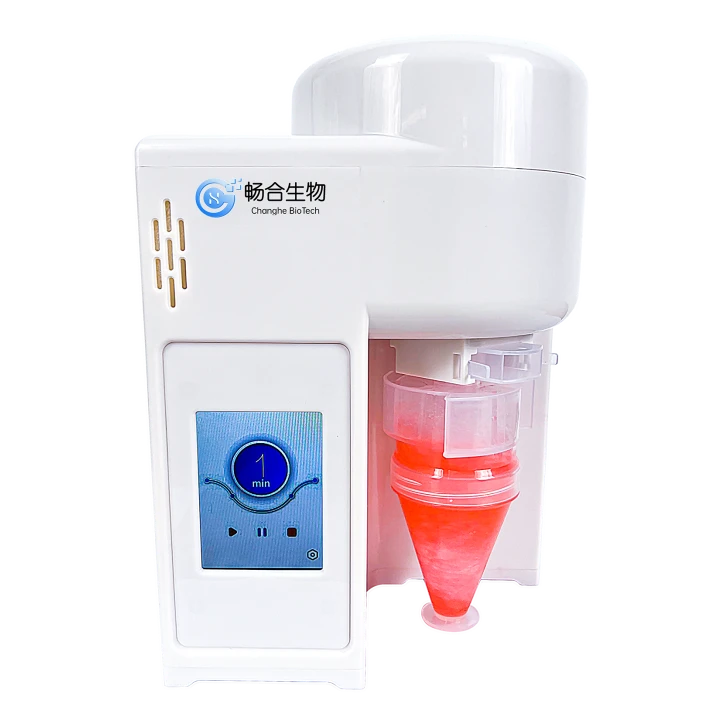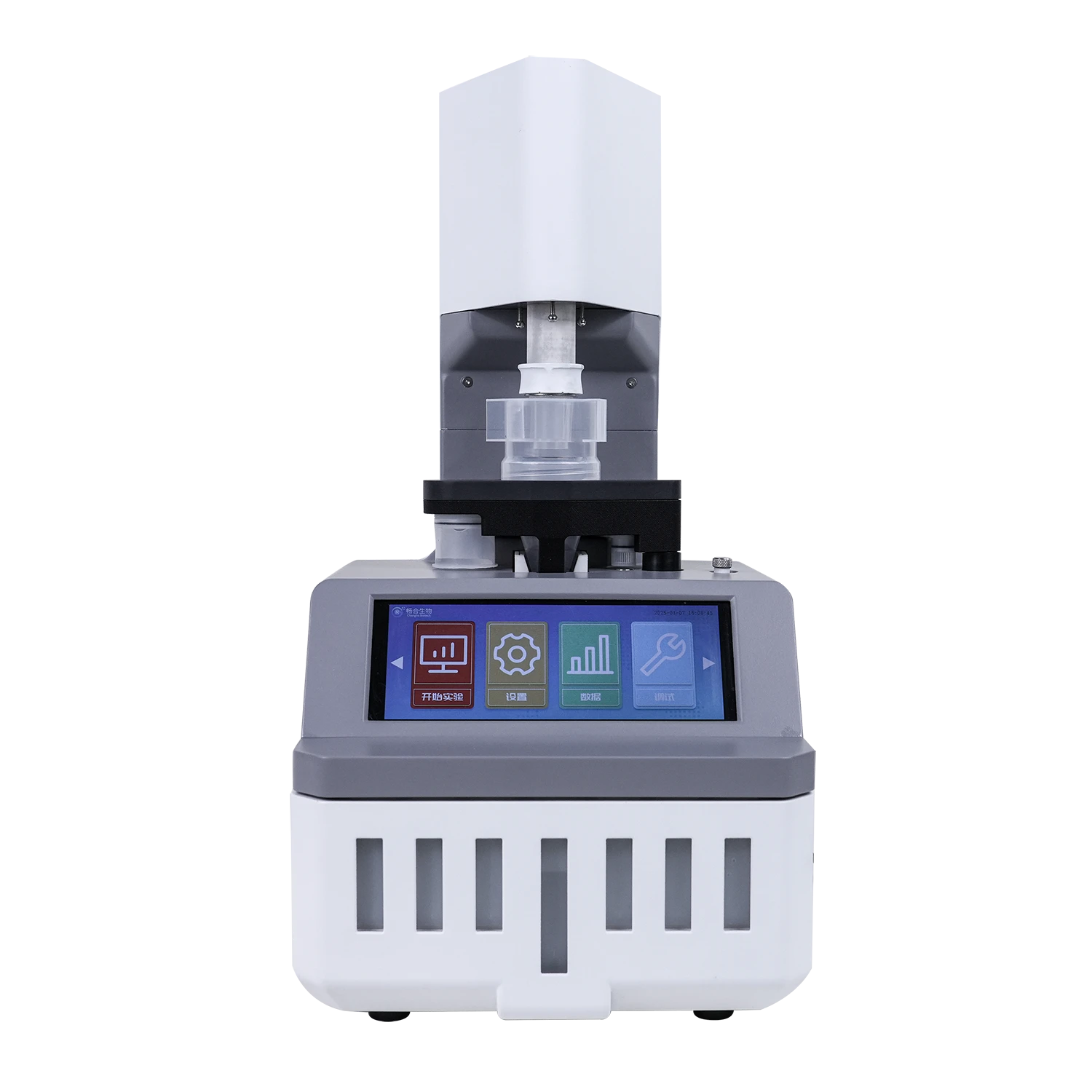
Bioaerosol Detection: Rapid & Accurate Air Quality Testing
The Imperative of Advanced bioaerosol detection in Modern Environments
In an increasingly complex world, the presence of biological aerosols, or bioaerosols, poses significant risks to public health, industrial processes, and environmental quality. These airborne particles, which can include bacteria, viruses, fungi (mold spores), pollen, and their fragments or toxins, are ubiquitous and can originate from natural sources (e.g., soil, water, plants) or anthropogenic activities (e.g., wastewater treatment, agriculture, healthcare facilities). Effective bioaerosol detection is no longer a niche requirement but a critical component of comprehensive environmental monitoring and risk management strategies across diverse sectors.
The rising global awareness of airborne pathogens, amplified by recent public health crises, has underscored the urgent need for robust, real-time bioaerosol detection capabilities. Traditional methods, often relying on manual sampling followed by laboratory analysis, are time-consuming and lack the immediacy required for rapid response to hazardous events. This article delves into the intricacies of modern bioaerosol detection technologies, focusing on their industry trends, technical parameters, application scenarios, and the tangible advantages they offer. We aim to provide B2B decision-makers and technical personnel with a comprehensive understanding of how advanced solutions, such as the Continous Bioaerosol Sampler, are shaping the future of air quality management.
Beyond general environmental monitoring, specific concerns such as air and mold testing and toxic mold detection highlight the particular threat posed by fungal bioaerosols. These can lead to significant structural damage in buildings and severe health issues, necessitating precise and timely detection to mitigate risks.
Current Industry Trends and Challenges in Bioaerosol Monitoring
The landscape of bioaerosol detection is evolving rapidly, driven by technological advancements and increasing regulatory pressure. Key trends include the shift towards continuous and real-time monitoring, the integration of multi-spectral analysis techniques, and the development of more portable and user-friendly devices. The demand for automated systems that can provide immediate alerts without human intervention is particularly strong in critical environments.
One significant trend is the convergence of traditional air sampling with advanced molecular diagnostics. While conventional methods might involve impaction or filtration followed by culturing on agar plates to quantify colony-forming units (CFUs), modern approaches often integrate polymerase chain reaction (PCR), quantitative PCR (qPCR), or immunoassay techniques for rapid, specific identification of pathogens or allergens. This shift significantly reduces the time-to-result, a critical factor in emergency response and proactive hazard mitigation.
Challenges persist, however. These include the low concentration of biological agents in ambient air, the vast diversity of airborne microorganisms, and the need to differentiate viable from non-viable particles. Furthermore, achieving high specificity while maintaining broad detection capabilities for a wide range of potential threats remains a technical hurdle. The industry is actively pursuing solutions that balance sensitivity, speed, and affordability, making sophisticated bioaerosol detection accessible to a broader range of users, from industrial hygienists to building management professionals conducting air sample mold test operations.
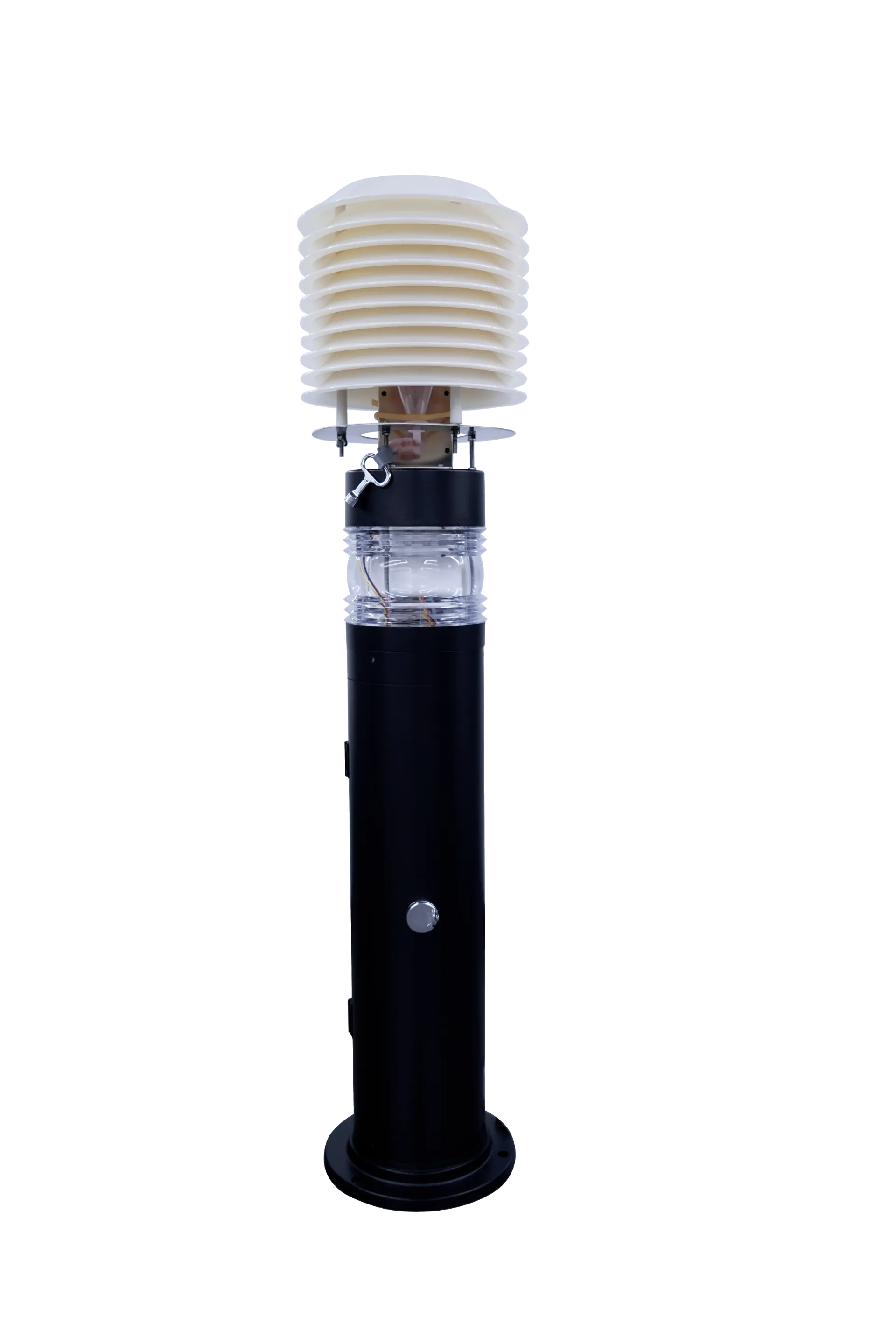
The integration of Internet of Things (IoT) capabilities allows for remote monitoring and data aggregation, enabling predictive analytics for potential outbreaks or contamination events. This capability is especially valuable in large-scale facilities or distributed networks where continuous oversight is essential for effective bioaerosol detection and risk management.
The Continous Bioaerosol Sampler: A Deep Dive into Advanced Detection
The Continous Bioaerosol Sampler represents the pinnacle of modern bioaerosol detection technology, designed for precision, reliability, and ease of use in diverse and demanding environments. Unlike intermittent samplers, this device offers continuous monitoring, providing a more accurate representation of dynamic airborne microbial populations.
Manufacturing Process and Quality Assurance
The superior performance of the Continous Bioaerosol Sampler stems from its meticulously engineered manufacturing process, adhering to stringent quality control standards. The core components, including the impaction head, flow chamber, and collection substrate mechanisms, are fabricated using advanced processes to ensure optimal aerodynamic performance and sample integrity.
- Material Selection: Components are typically crafted from medical-grade, corrosion-resistant stainless steel (e.g., 316L) or high-performance, autoclavable polymers. These materials ensure durability, chemical inertness, and minimize non-specific binding or degradation of biological samples.
- Precision Machining: Critical parts, especially the inlet nozzles and impaction surfaces, undergo high-precision CNC machining. This ensures exact tolerances and optimal particle capture efficiency across a defined range of aerodynamic diameters. For instance, achieving a precise slit width for impaction stages is vital for size-selective collection, enabling the differentiation between respirable and non-respirable particles.
- Advanced Manufacturing Techniques: Beyond CNC, processes like laser welding are employed for hermetic sealing of sensitive internal components, preventing leaks and maintaining consistent airflow. For specialized flow paths, additive manufacturing (3D printing) with high-grade technical plastics might be used to create complex geometries that optimize sample collection without significant pressure drop.
- Assembly in Controlled Environments: All samplers are assembled in ISO-certified cleanrooms (e.g., ISO Class 7 or 8) to prevent contamination during manufacturing. This ensures that the device itself does not introduce foreign biological material into the collected sample.
- Calibration and Testing Standards: Each Continous Bioaerosol Sampler undergoes rigorous calibration and validation. Airflow rates are calibrated against traceable standards (e.g., NIST) to ensure accurate volumetric sampling. Collection efficiency is verified using standard bioaerosol challenge tests (e.g., with inert particles or non-pathogenic bacteria/spores of known size). Products comply with relevant industry standards such as ISO 14698 (Cleanrooms and associated controlled environments – Biocontamination control) and specific ANSI/ASHRAE guidelines for air quality and ventilation.
- Durability and Lifespan: Designed for continuous operation, the sampler boasts an extended service life, typically exceeding 5-7 years with proper maintenance, due to robust component selection and modular design allowing for easy replacement of wear parts.
This meticulous manufacturing ensures that the Continous Bioaerosol Sampler consistently delivers accurate and reliable data for bioaerosol detection, making it a dependable tool for critical applications requiring immediate insights into airborne biological threats.
Key Technical Specifications and Parameters
Understanding the technical parameters of a bioaerosol detection system is crucial for assessing its suitability for specific applications. The Continous Bioaerosol Sampler is engineered with specifications that optimize performance for a wide range of microbial particles.
| Parameter | Continous Bioaerosol Sampler (Typical) | Traditional Impactor (Representative) | Filter-Based Sampler (Representative) |
|---|---|---|---|
| Sampling Method | Liquid Impingement / Cyclonic Separation (Continuous) | Agar Impaction (Batch) | Membrane Filtration (Batch) |
| Airflow Rate | 10-100 LPM (Adjustable) | 28.3 LPM (Fixed) | 1-30 LPM (Variable) |
| Particle Size Range (Effective Collection) | 0.5 - 20 µm | 0.8 - 10 µm | 0.1 - 100 µm (Filter pore size dependent) |
| Collection Medium | Sterile Liquid (e.g., PBS, growth media) | Agar Plate | Sterile Membrane Filter |
| Continuous Operation Duration | Up to 24-72 hours (depending on liquid volume) | 1-10 minutes (per plate) | 30-60 minutes (per filter) |
| Viability Retention | High (liquid collection minimizes desiccation stress) | Moderate (impaction stress) | Moderate to High (desiccation on filter) |
| Post-Sampling Analysis Compatibility | Culture, PCR/qPCR, Flow Cytometry, Microscopy | Culture, Microscopy | Culture, PCR/qPCR, Microscopy |
| Power Consumption | < 50W (Typical operating) | < 20W (Typical operating) | < 30W (Typical operating) |
| Dimensions (Approx.) | 30x20x25 cm (LWH) | 15x15x20 cm (LWH) | 20x10x15 cm (LWH) |
This table highlights the superiority of continuous liquid impingement in terms of continuous operation and sample compatibility for advanced downstream analysis, critical features for effective bioaerosol detection.
Strategic Advantages of Continuous Bioaerosol Sampling
The advantages of employing a Continous Bioaerosol Sampler for comprehensive bioaerosol detection are manifold, extending beyond mere data collection to proactive risk management and operational efficiency.
- Real-time Monitoring & Rapid Response: Continuous sampling allows for immediate access to samples, facilitating quick lab analysis (e.g., qPCR for specific pathogens) in response to potential airborne threats. This drastically reduces the lag time compared to batch sampling, enabling swift intervention to prevent outbreaks or mitigate exposure, crucial for instances of toxic mold detection where quick remediation is key.
- High Sample Integrity: Liquid collection minimizes stress on microorganisms, ensuring high viability for subsequent culturing and accurate enumeration of viable particles. This is particularly important for pathogenic bacteria and viruses that are sensitive to desiccation or impaction forces.
- Compatibility with Advanced Analytics: The liquid sample collected is directly amenable to a wide array of molecular and immunological assays (PCR, ELISA, flow cytometry) without extensive pre-processing. This versatility supports comprehensive characterization of the bioaerosol profile, from total microbial load to specific species identification.
- Quantitative Accuracy: Precise control over airflow rates and collection mechanisms ensures high quantitative accuracy, providing reliable data on bioaerosol concentrations, which is paramount for compliance and health risk assessments.
- Reduced Human Intervention & Labor Costs: Automation inherent in continuous systems significantly reduces the need for constant manual sample changes, leading to lower operational costs and freeing up personnel for more analytical tasks. This makes it an ideal solution for remote or difficult-to-access monitoring locations in facilities requiring continuous air and mold testing.
- Versatility Across Industries: The robust design and flexible operating parameters make the Continous Bioaerosol Sampler suitable for a broad spectrum of industries, from pharmaceuticals and cleanrooms to agricultural facilities and public health surveillance.
- Enhanced Data for Predictive Modeling: Continuous data streams contribute to more robust datasets, enabling better predictive modeling of bioaerosol dispersion, seasonal trends, or the impact of environmental factors, thereby improving proactive health and safety strategies.
These advantages position the Continous Bioaerosol Sampler as a superior choice for any organization committed to maintaining stringent air quality standards and safeguarding against airborne biological hazards through proactive bioaerosol detection.
Key Application Scenarios and Case Studies
The versatility of the Continous Bioaerosol Sampler allows its deployment across a wide range of industries where precise and reliable bioaerosol detection is paramount. Its adaptability ensures effective monitoring in varied environmental conditions and operational contexts.
- Pharmaceutical & Biotech Manufacturing: In sterile cleanrooms (e.g., ISO Class 5 to 8), continuous bioaerosol detection is critical for validating environmental controls and preventing microbial contamination of sensitive products. The sampler can be integrated into facility monitoring systems, providing real-time data on fungal spores, bacterial counts, and viral particles, ensuring compliance with cGMP (current Good Manufacturing Practices) and FDA regulations.
- Healthcare Facilities & Hospitals: Monitoring operating rooms, isolation wards, and high-traffic patient areas for airborne pathogens (e.g., SARS-CoV-2, influenza, Aspergillus) is vital for infection control. Continuous sampling assists in identifying high-risk areas and evaluating the effectiveness of HVAC systems and air purification technologies.
- Building Management & HVAC Systems: For commercial buildings, schools, and residential complexes, air and mold testing, especially for toxic mold detection, is a frequent concern. The sampler helps building managers proactively identify mold growth issues stemming from hidden water damage, monitor spore levels, and verify remediation efficacy. It contributes to maintaining healthy indoor air quality and preventing "Sick Building Syndrome."
- Environmental & Public Health Surveillance: Deployment in urban areas, near wastewater treatment plants, or agricultural sites (e.g., livestock farms) enables long-term epidemiological studies and early warning systems for airborne infectious diseases or allergen outbreaks. The continuous nature provides comprehensive temporal data.
- Food & Beverage Processing: Preventing microbial contamination in production areas, especially those handling raw ingredients or fermented products, is paramount. Continuous bioaerosol detection helps ensure product safety and quality by monitoring airborne spoilage organisms and pathogens like Listeria or Salmonella.
- Research & Development: Laboratories working with pathogenic microorganisms or conducting aerosolization studies benefit from precise and reliable sampling to ensure containment and assess exposure risks.
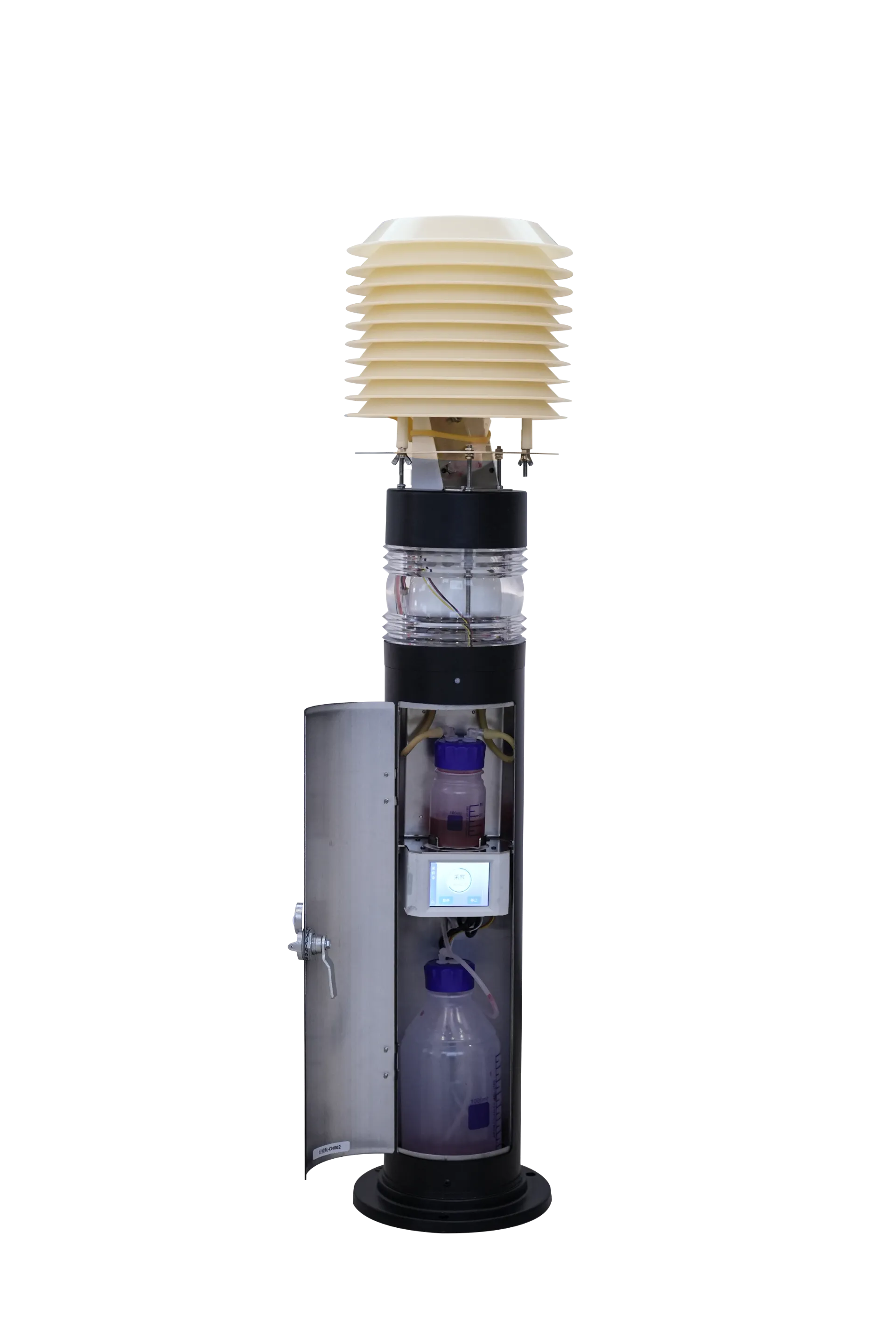
Case Study Snapshot: Cleanroom Validation at a Biopharmaceutical Plant
A leading biopharmaceutical manufacturer faced challenges in maintaining consistent environmental control in its Grade B aseptic filling suite, experiencing occasional excursions in viable particle counts. Traditional daily air sampling provided only snapshot data, making root cause analysis difficult. By deploying three Continous Bioaerosol Samplers strategically within the suite, integrated with their existing Building Management System, the company gained real-time insight into bioaerosol fluctuations. Within two weeks, the continuous data revealed a correlation between specific operator movements and transient increases in fungal spore levels, leading to a revision of gowning procedures and airflow patterns. This proactive bioaerosol detection approach not only reduced contamination risks but also streamlined their deviation management process, saving significant costs associated with batch reprocessing and investigations.
Comparing Bioaerosol Sampler Technologies: Why Continuous Excels
While various methods exist for bioaerosol detection, understanding their fundamental differences and limitations is key to selecting the most appropriate technology. Below, we compare the Continous Bioaerosol Sampler with other common approaches.
| Feature/Method | Continous Bioaerosol Sampler | Slit/Impaction Samplers (e.g., Andersen Sampler) | Filter Cassette Methods | Settling Plates (Passive) |
|---|---|---|---|---|
| Operation Mode | Active, Continuous (24/7 capability) | Active, Intermittent (Short run times) | Active, Intermittent (Medium run times) | Passive (Gravity-based) |
| Sample Collection Medium | Liquid (e.g., PBS, growth media) | Agar Plate | Membrane Filter (PTFE, Cellulose Ester) | Agar Plate |
| Viability of Organisms Post-Collection | Excellent (minimizes impaction/desiccation stress) | Good (some impaction stress) | Variable (desiccation on filter) | Good (no mechanical stress) |
| Quantitative Accuracy | High (controlled flow, known volume) | Moderate (short duration, potential for saturation) | High (controlled flow, known volume) | Low (influenced by air currents, non-quantitative) |
| Suitability for Molecular Analysis (PCR, etc.) | Excellent (liquid sample, high concentration) | Good (requires washing off agar) | Good (requires elution from filter) | Poor (low concentration, often contaminated) |
| Labor Requirement | Low (periodic liquid change) | High (frequent plate changes) | Medium (filter changes) | Low (periodic plate changes) |
| Cost of Consumables | Medium (liquid media) | High (numerous agar plates) | Medium (filters) | Low (agar plates, but less data) |
This comparison clearly illustrates why continuous liquid impingement samplers are becoming the preferred method for demanding bioaerosol detection applications. They offer a superior blend of accuracy, sample integrity, and analytical flexibility, crucial for truly understanding and managing airborne biological risks.
Customized Solutions for Specialized Bioaerosol Detection Needs
Recognizing that no two applications for bioaerosol detection are exactly alike, we specialize in providing customized solutions tailored to the unique requirements of our clients. Our approach goes beyond simply supplying a product; we engage in a collaborative process to design, configure, and implement a complete monitoring strategy.
This customization often involves:
- Integration with Existing Systems: We ensure seamless compatibility of our Continous Bioaerosol Samplers with your current building management systems (BMS), SCADA systems, or environmental monitoring platforms. This includes developing custom APIs or communication protocols (e.g., Modbus, OPC UA) for data exchange and remote control.
- Environmental Hardening: For harsh industrial environments (e.g., petrochemical, wastewater treatment plants, or outdoor surveillance), we can provide samplers with enhanced enclosures, corrosion-resistant coatings, and temperature/humidity control features to ensure reliable operation under extreme conditions. While the primary product is a sampler, its deployment context often demands such industrial-grade considerations.
- Specific Collection Media: Depending on the target microorganisms (e.g., specific bacteria, fungi for air sample mold test, viruses), we can advise on or provide customized collection media that optimize viability or facilitate downstream analysis (e.g., specific buffers for viral RNA extraction).
- Specialized Sampling Heads: For applications requiring specific particle size cut-offs or higher flow rates, custom impaction heads can be designed to meet precise aerodynamic particle diameter requirements.
- Comprehensive Data Analysis & Reporting: Beyond raw data, we can assist in setting up advanced data visualization dashboards, alert systems, and automated reporting functionalities that provide actionable insights relevant to your compliance, safety, or operational goals. This includes trend analysis for long-term bioaerosol detection patterns.
- Turnkey Installation & Training: Our service extends to professional installation, comprehensive on-site training for your technical staff, and ongoing technical support to ensure your team is fully proficient in operating and maintaining the system for optimal bioaerosol detection performance.
Our engineering team collaborates closely with clients from initial consultation to post-implementation support, ensuring that the deployed bioaerosol detection solution is not just a product, but a perfectly integrated and optimized component of their critical infrastructure.
Ensuring Quality, Authority, and Trust in Bioaerosol Solutions ( Focus)
Our commitment to excellence in bioaerosol detection is underpinned by adherence to the highest standards of Expertise, Experience, Authoritativeness, and Trustworthiness (). We understand that for B2B clients, confidence in a solution provider is as crucial as the technology itself.
Expertise & Experience: Years of Innovation and Practical Application
With over 15 years in the field of advanced air quality and biological monitoring solutions, our team possesses unparalleled expertise. Our engineers and scientists are deeply versed in aerosol physics, microbiology, and molecular diagnostics. This comprehensive knowledge base translates directly into the design and functionality of our Continous Bioaerosol Samplers, ensuring they address the nuanced challenges of diverse environments, from cleanrooms to outdoor surveillance for toxic mold detection. Our experience includes successful deployments in hundreds of critical facilities worldwide, ranging from Fortune 500 pharmaceutical companies to government public health agencies.
We regularly publish technical white papers and participate in industry conferences, contributing to the broader scientific understanding of bioaerosols and their detection. Our technical support staff are not merely troubleshooters; they are application specialists who can provide insights into sampling strategies, data interpretation, and integration challenges.
Authoritativeness: Certifications, Partnerships, and Scientific Validation
- ISO Certification: Our manufacturing processes and quality management systems are ISO 9001:2015 certified, ensuring consistent product quality and operational efficiency in every Continous Bioaerosol Sampler.
- Regulatory Compliance: Our instruments are designed to assist clients in meeting relevant regulatory standards, including those from the FDA (for pharmaceutical applications), EPA (for environmental monitoring), and CDC (for public health surveillance), as applicable to bioaerosol detection.
- Peer-Reviewed Validation: The core technology behind our samplers has been independently validated in numerous peer-reviewed studies, demonstrating superior collection efficiency and viability retention compared to conventional methods.
- Strategic Partnerships: We collaborate with leading academic institutions and research organizations in microbiology and environmental science, continuously advancing the state-of-the-art in bioaerosol detection. Our partnerships with key analytical laboratories ensure seamless post-sampling analysis for our clients.
Trustworthiness: Transparency, Support, and Guarantees
Building long-term client relationships is fundamental to our philosophy. We foster trust through transparent operations, comprehensive support, and clear commitments.
Delivery and Logistics:
We maintain robust supply chain management to ensure timely delivery of our products. Typical lead times for standard Continous Bioaerosol Samplers are 4-6 weeks from order confirmation, with expedited options available for urgent requirements. For customized solutions, lead times are quoted on a project-by-project basis, considering the complexity of design and manufacturing. All shipments are securely packaged and insured, with real-time tracking provided.
Warranty and Support:
Every Continous Bioaerosol Sampler comes with a standard 2-year warranty covering manufacturing defects and component failures. Extended warranty and service contracts are available, including preventative maintenance, calibration services, and priority technical support. Our dedicated support team is available via phone and email during business hours to assist with any operational or technical queries regarding your bioaerosol detection system.
Frequently Asked Questions (FAQ):
- Q: What is the typical turnaround time for lab analysis after sampling with the Continous Bioaerosol Sampler?
A: For culture-based methods, results are typically available within 2-5 days depending on the organism. For rapid molecular methods like qPCR, results can be obtained within hours of receiving the sample, providing near real-time bioaerosol detection insights.
- Q: Can the sampler differentiate between viable and non-viable particles?
A: While the sampler collects both viable and non-viable particles, the liquid collection method ensures high viability retention. Subsequent analysis (e.g., culturing for viable counts, vs. PCR for total DNA/RNA) allows differentiation. Our experts can guide you on suitable analytical workflows for your air sample mold test needs.
- Q: Is the sampler suitable for outdoor use in varying weather conditions?
A: The standard unit is designed for indoor and controlled environments. However, we offer ruggedized versions with weather-resistant enclosures and environmental controls (temperature/humidity) for outdoor or harsh industrial deployments. This is especially relevant for continuous toxic mold detection in outdoor industrial areas.
- Q: How often does the collection liquid need to be changed?
A: The frequency depends on the air quality of the environment and the volume of liquid used. Typically, for moderately clean environments, liquid replacement is recommended every 24-72 hours of continuous operation to maintain sample integrity and prevent microbial overgrowth in the collection medium. This ensures reliable air and mold testing data.
- Q: What training is required to operate the Continous Bioaerosol Sampler?
A: The sampler is designed for intuitive operation. We provide comprehensive user manuals and offer on-site or remote training sessions to ensure your team is proficient in setup, operation, basic maintenance, and troubleshooting, facilitating optimal bioaerosol detection.
Our commitment to these pillars ensures that when you choose our Continous Bioaerosol Sampler, you are investing in a reliable product backed by industry-leading expertise and dedicated support.
Conclusion: Paving the Way for Proactive Air Quality Management
The rising complexity of environmental and public health challenges necessitates a paradigm shift in how we approach airborne biological threats. Passive or intermittent sampling methods are increasingly inadequate for dynamic environments where rapid changes in bioaerosol concentrations can have immediate and severe consequences. The Continous Bioaerosol Sampler, with its advanced features, precise engineering, and robust design, stands at the forefront of this evolution, offering an unparalleled solution for continuous, high-fidelity bioaerosol detection.
By providing real-time data, high sample integrity for advanced analysis, and unparalleled operational efficiency, this technology empowers industries ranging from pharmaceuticals to building management to transition from reactive problem-solving to proactive risk mitigation. Whether the goal is ensuring sterility in critical manufacturing processes, safeguarding public health, or effectively managing indoor air quality to prevent issues like toxic mold detection, the ability to continuously monitor and rapidly respond to airborne biological hazards is indispensable.
Investing in advanced bioaerosol detection capabilities is not merely a compliance measure but a strategic decision that enhances operational resilience, protects human health, and preserves asset value. Our commitment to expertise, experience, authoritativeness, and trustworthiness ensures that our partners receive not just a cutting-edge product, but a comprehensive solution designed for long-term success in an ever-evolving threat landscape.
References
- Brandl, M. T. (2006). Aerobiology and the Air: Understanding Bioaerosol Transmission. Annual Review of Microbiology.
- Reponen, T., & LeMasters, G. (2008). Bioaerosols: Assessment and Control. CRC Press.
- Kowalski, W. J., Bahnfleth, W. P., & Whittam, T. S. (2019). Airborne Pathogens: Air Filtration Solutions. CRC Press.
- ISO 14698-1:2003 Cleanrooms and associated controlled environments — Biocontamination control — Part 1: General principles and methods.
- Pasquarella, C., Pitzurra, F., & Savino, F. (2000). The importance of air sampling in the surveillance of airborne fungal contamination in operating theatres. Journal of Hospital Infection.
- Chang, J. C. S., & Leininger, R. A. (2008). Bioaerosol and particulate monitoring requirements for cleanroom environmental control. Controlled Environments Magazine.
- Jensen, P. A., et al. (1992). Aerosol sampling for airborne microorganisms. Applied Occupational and Environmental Hygiene.
-
Precision Air Sample Mold Test Kits | DIY Home Mold DetectionNewsAug.19,2025
-
Rapid Bioaerosol Detection for Air & Mold SafetyNewsAug.18,2025
-
Advanced Bioaerosol Detection for Air & Mold SafetyNewsAug.17,2025
-
Accurate Bioaerosol Sampler: Precision Air MonitoringNewsAug.15,2025
-
Reliable Bioaerosol Detection & Air Mold Testing SolutionsNewsAug.14,2025

